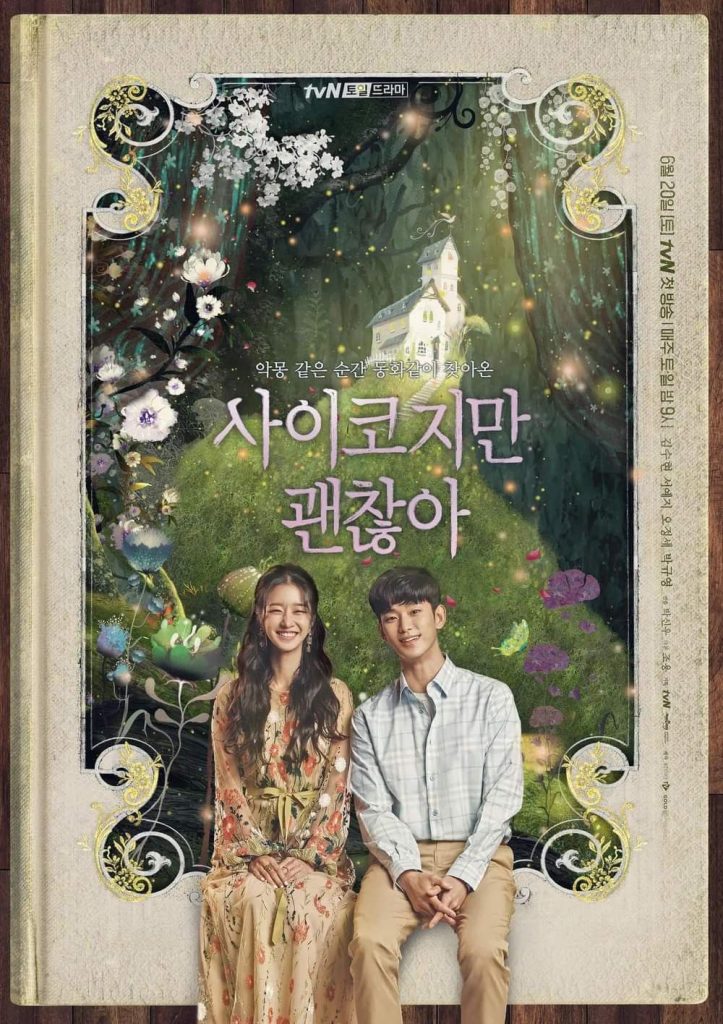
A visually stunning and emotionally layered drama, It’s Okay to Not Be Okay blends romance, healing, and psychological depth in a way that redefined the K-drama landscape. With its bold storytelling and fairy-tale motifs, the series is both heartbreaking and uplifting, leaving a lasting impression on viewers worldwide.
Plot Summary
Moon Gang-tae (Kim Soo-hyun) works as a caretaker in a psychiatric hospital, hiding his own scars while looking after his older brother who has autism. His life takes a sharp turn when he crosses paths with Ko Mun-yeong (Seo Ye-ji), a famous children’s book author known for her cold, anti-social personality.
Despite their contrasting worlds, the two are drawn together—each carrying deep emotional wounds. Alongside Gang-tae’s brother, Sang-tae (Oh Jung-se), they embark on a journey of healing, love, and acceptance, breaking through the walls of trauma and rediscovering the meaning of family.
Highlights
- Kim Soo-hyun anchors the story with a moving performance, capturing both tenderness and suppressed pain.
- Seo Ye-ji is magnetic and mysterious, perfectly embodying Ko Mun-yeong’s sharp edges and hidden vulnerability.
- Fairy-tale visuals and symbolic storytelling make each episode feel like stepping into a modern fable.
- Themes of mental health, trauma, and healing are handled with rare sensitivity in K-drama.
What Could Be Better
- Some viewers may find the pacing slow as the story prioritizes character growth over high-stakes plot twists.
- The exaggerated personality of Ko Mun-yeong might feel polarizing for audiences expecting a conventional romance lead.
Verdict
It’s Okay to Not Be Okay is more than just a romance—it’s a poignant story of acceptance, healing, and love for both self and others. While its pace and eccentric characters may not appeal to everyone, the drama stands out as a beautifully crafted, emotionally resonant masterpiece in modern Korean television.
